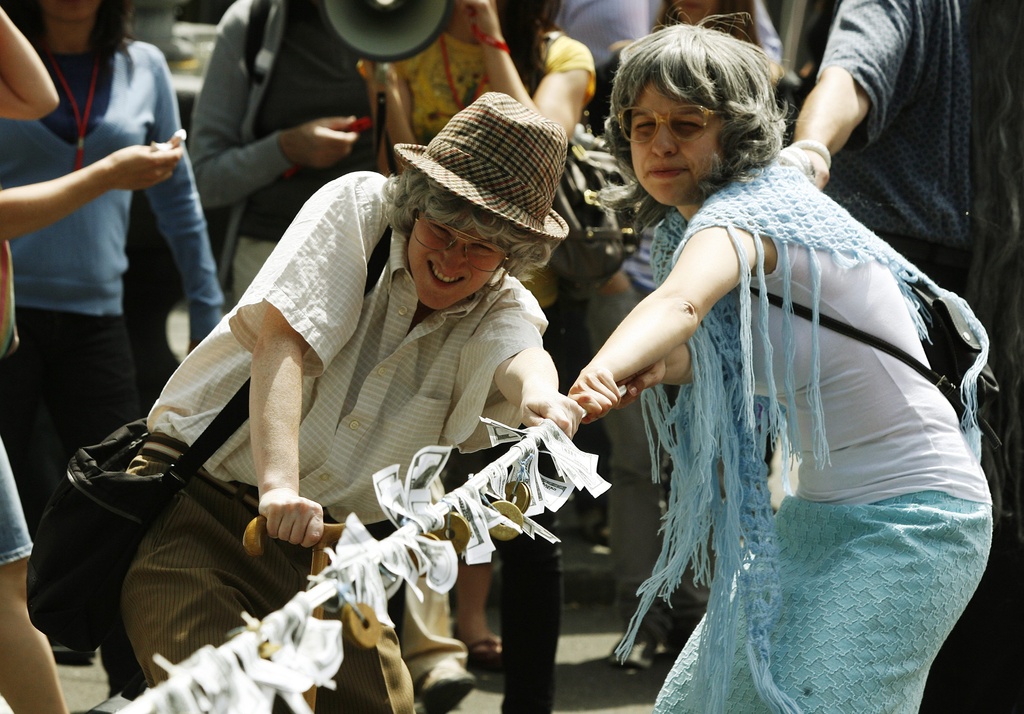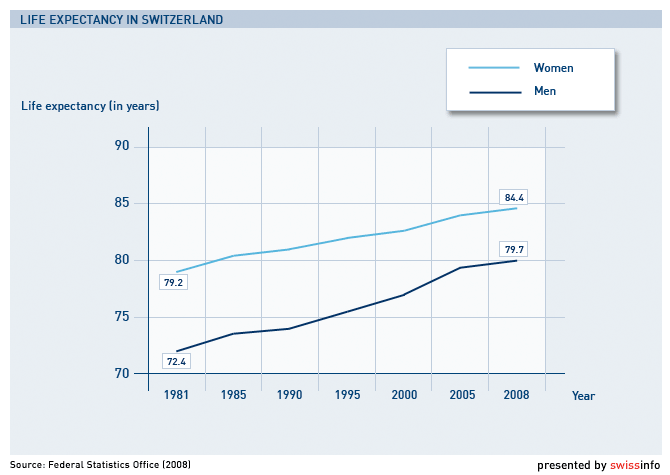Public puzzled by campaign on pension cuts

The nationwide ballot on planned pension cuts on March 7 is of key importance both to the business community and to trade unions - for different reasons.
But less than three weeks ahead of the vote it is not clear to what extent campaigns by supporters and opponents have had an impact on the public perception despite a flood of propaganda material.
Voters will be asked to decide on the minimum conversion rate of the occupational pension scheme. The rate presently stands at about seven per cent and is to be reduced to 6.4 per cent by 2016 if the government and a majority of parliament have their way.
It means that employees will see benefits from the occupational pension scheme – the so called second pillar – reduced.
Under the current rate, a retired man with accumulated capital of SFr100,000 ($93,686) in the pension fund would receive SFr7,000 annually. The new rate would see payments drop to SFr6,400 a year.
“Theft”
However, trade unions, consumer groups and centre-left parties collected more than 200,000 signatures within three months – four times more than necessary – to challenge the decision to a referendum.
They argue the reduction is unnecessary and tantamount to “benefits theft” by the Business Federation and private insurance companies.
“Insurance managers want to siphon off as much money from the pension scheme as possible,” said Ruedi Rechsteiner of the centre-left Social Democrats.
The planned pension cuts would threaten “a dignified life” for the older generation, says the Unia trade union – one of the driving forces behind the referendum.
Consumer groups accused insurance companies of scaremongering and using inaccurate figures to prove that the accumulated capital is insufficient to cover for an ageing population.
Risks
“The reduction of the conversion rate is necessary to guarantee the future of the pension scheme for the younger generation;” said Gerold Bührer, president of the Swiss Business Federation.
The Employers Association adds that failure to adapt the rate would leave pension funds no choice but to make risky investments to ensure the financial stability of the insurance scheme.
The government, alongside the main centre-right and rightwing parties, warned the country’s unique social security system and economic prosperity were at stake.
“Voters can choose between security and insecurity,” said Interior Minister Didier Burkhalter at the launch of the yes campaign in December.
The mandatory occupational pension benefits are part of the three-tier retirement system, including the state old age pension and individual savings made on a voluntary basis.
Reputation
The run-up to the vote on March 7 has been marked by an unusually early campaign launch, including posters and advertisements particularly by supporters of the pension cuts.
“It is an indication that the business community and centre-right parties consider it an important vote,” says Thomas Milic, political scientist at the universities of Bern and Zurich.
Pension fund consultant and journalist Werner C. Hug describes the vote as a “reputation issue” for supporters.
Trade unions for their part made it clear that they consider it a key element of their opposition to any plans to “undermine the achievements of the welfare state”.
In public perception the campaign is characterised by squabbling over administrative costs of pension funds, forecasts about mortality rates of pensioners and capital revenue as well as the high profile of trade unionist activists.

More
Law on Occupational Benefits
Squabbling
Hug regrets that insurance representatives are at the forefront of the campaign to convince voters. The move could backfire in the current political climate, he says.
“A purely technical matter has turned into an emotional issue about excessive manager salaries and greedy banks,” Hug warns.
As a result citizens are increasingly unwilling to use reason to decide on the issue, he suspects.
Political scientist Milic agrees that the flood of contradictory, largely mathematical information, could lead to irritation among the electorate.
“Citizens no longer know who they can trust,” he adds.
Poll
It is estimated that supporters will spend about SFr10 million on the campaign, while the unions announced their budget was one tenth that amount. But they hope to make up for it with grassroot members setting up picket lines at public events, activists distributing leaflets, brochures and other campaigning.
Both sides have pledged to step up their efforts with more posters, newspaper ads and online games, including a pension calculator.
In the absence of the usual pre-vote data compiled by a leading polling institute on behalf of the Swiss Broadcasting Corporation, the unions commissioned their own survey.
It showed that opponents of pension cuts have a clear lead with 40 per cent against and 12 per cent in favour. But more than 40 per cent said they are either undecided or refused to answer.
Urs Geiser, swissinfo.ch
Cuts in occupational benefits are one of three issues to come to a nationwide ballot on March 7.
Voters are also due to decide on the creation of special lawyers to boost the legal status of animals in court cases.
A constitutional amendment on human research is also awaiting voters’ verdict.
The system was introduced on a mandatory basis for employees in 1985. It is an element of the three-tier pension scheme.
In 2003 parliament decided to gradually lower the minimum conversion rate – a mathematical unit to calculate the percentage of the accumulated capital paid out to a pensioners – from 7.2% to 6.8% by 2014.
Under the new proposal, the rate is to be cut to 6.4% by 2016 for both men and women.
The government, most political parties and the business community have come out in favour of the reform.
But the centre-left parties, trade unions and consumer groups have forced a referendum.
The official retirement age for men in Switzerland is 65, for women 64.


In compliance with the JTI standards
More: SWI swissinfo.ch certified by the Journalism Trust Initiative












You can find an overview of ongoing debates with our journalists here . Please join us!
If you want to start a conversation about a topic raised in this article or want to report factual errors, email us at english@swissinfo.ch.